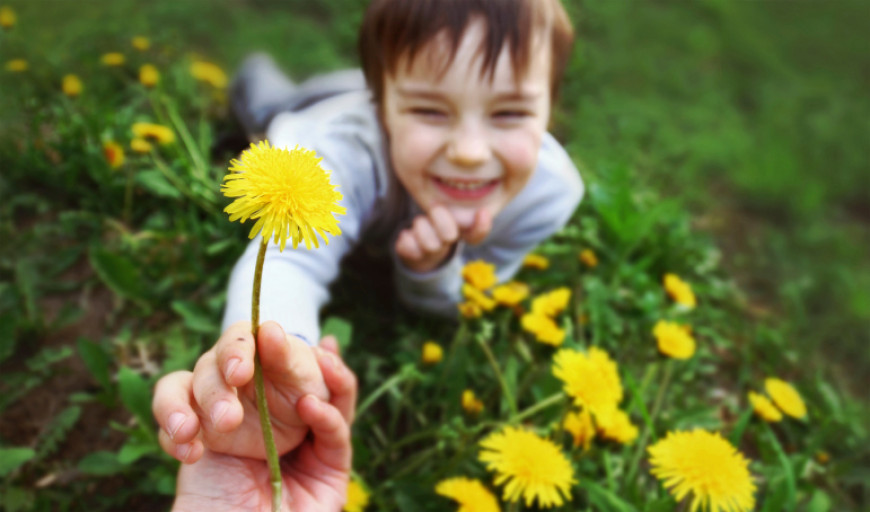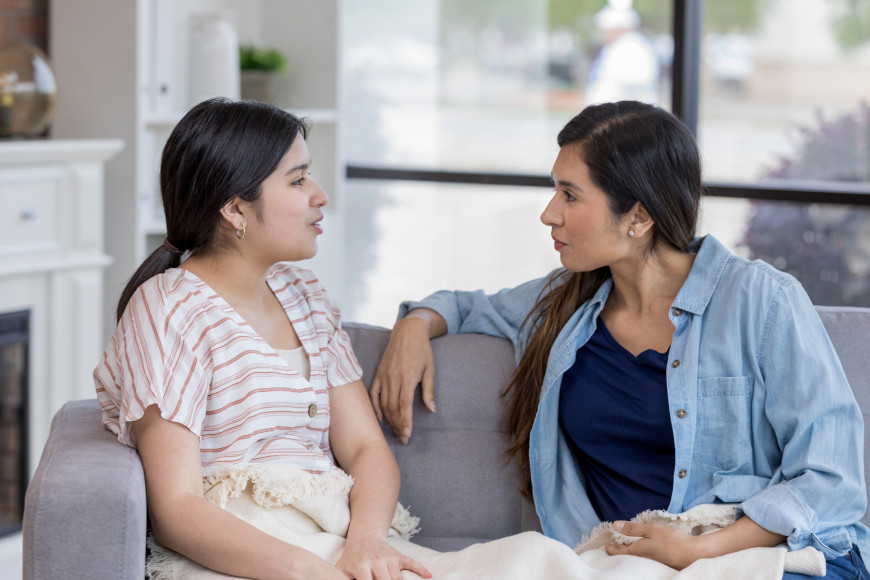Time Required
Take 15 minutes to go through the steps below. Try to repeat these steps with a different person at least once per week.
How to Do It
- Choose a person in your life who seems to be very different from you in every way that you can imagine. They might have different interests, different religious or political beliefs, or different life experiences. They might even be someone with whom you have had a personal conflict, or someone who belongs to a group that has been in conflict with one of your social groups. You don’t have to pick someone who makes you feel nervous or unsafe.
- Make a list of the things that you most likely share in common with this person. Perhaps you both work for the same company or go to the same school. Maybe you both have children, or a significant other. Probably you have both had your heart broken at one point or another, or have lost a loved one. Remind yourself that you and this person are both human beings.
- Review the list you made. Do the things you listed make you see this person in a new light? Instead of simply seeing this person as unfamiliar or as an outsider, try to see them as a regular person, one whose tastes and experiences might overlap with yours in certain ways.
- Repeat this exercise. Try it whenever you meet someone who initially seems different from you, who has a conflict with you, or who you feel uncomfortable around.
Why You Should Try It
Research suggests that humans have a deeply rooted propensity to be kind and generous, but some obstacles can prevent us from acting on those altruistic impulses. One of the greatest barriers to altruism is that of group difference: We feel much less motivated to help someone if they don’t seem to belong to our group or tribe—that is, if they’re not a member of our “in-group”—and we may even feel hostile toward members of an “out-group.”
But studies have consistently found that who we see as part of our “in-group” can be malleable. That’s why a key to promoting altruism, which involves acting to promote someone else’s welfare even at a risk or cost to oneself, is recognizing commonalities with someone else, even if those similarities aren’t immediately apparent. This exercise is designed to help expand one's sense of shared identity with others.
Why It Works
Although people generally want and try to be altruistic, they may also feel competitive toward people outside of their “in-group,” and the boundaries of their in-group might shrink at times when resources seem scarce or they are fearful for their safety. Reminding people to see the basic humanity that they share with those who might seem different from them can help overcome fear and distrust and promote cooperation. Even small similarities, like recognizing a shared love of sports, can foster a greater sense of kinship across group boundaries. Importantly, recognizing commonalities doesn’t mean negating differences, but may in fact help people value differences rather than feeling threatened by them.
Evidence That It Works
Levine, M., Prosser, A., Evans, D., & Reicher, S. (2005). Identity and emergency intervention: How social group membership and inclusiveness of group boundaries shape helping behavior. Personality and Social Psychology Bulletin, 31(4), 443-453.
Male university students in England were more likely to help a fallen jogger when the jogger was a fellow fan of the same soccer team than when the jogger was a fan of a rival team (as indicated by their shirt). But when participants were reminded of a shared identity with the fallen rival (being a soccer fan), they were more likely to help than they were to help a non-fan.
Leary, M. R., Tipsord, J. M., & Tate, E. B. (2008). Allo-inclusive identity: Incorporating the social and natural worlds into one's sense of self. In H. A. Wayment & J. J. Bauer (Eds.), Transcending self-interest: Psychological explorations of the quiet ego (pp. 137-147). Washington: APA.
American participants who reported feeling a greater sense of connection to other people, regardless of group distinctions, and to the natural world at large also reported less egocentricity, more concern for others, and less interest in having power over others.
Who has tried the practice?
Additional studies explore how a sense of shared identity affects various groups:
- Caucasian U.S. citizens read one of two statements: one that highlighted the shared immigrant identity of all American residents, or one that highlighted the separate identity of Caucasian citizens and immigrants. Compared to those who read about separate identity, those who read about shared identity were more likely to donate a 40-cent participation bonus to a nonprofit human rights organization.
- Norwegian adults who indicated that “Norwegians and Muslim immigrants represent one and the same group” were more likely to support the rights of Muslim immigrants than Norwegian adults who indicated that “Norwegians and Muslim immigrants represent two different groups.” A study with Caucasian U.S. citizens had similar findings with respect to immigrants.
- Vietnamese American university students (immigrants and children of refugees) felt less hostile and expressed more support toward other refugees and immigrants after journaling about their experiences of oppression. Students felt more hostile and expressed less support if they didn't reflect on the struggles they might have in common.
- Dutch college students read about harmful Dutch stereotypes in Europe and then wrote a short essay about their Dutch identity or their collective European identity. When an Italian lab assistant spilled a box of pens, students who had written about their shared European identity picked up more pens than students who had written about their Dutch identity.
- Disadvantaged minority groups in India expressed more support of Bhutanese refugees after journaling about their struggles and were less supportive if they did not reflect on struggles that they might have in common.
More research is needed to explore whether, and how, the impact of this practice extends to other groups and cultures.
Keep in Mind
In some contexts, highlighting certain shared identities may not have the same benefits:
- Female Belgian college students who completed surveys about Muslims that emphasized their shared womanhood expressed stronger Islamophobic beliefs.
- Democratic and Republican American women were asked to evaluate the gender-related policies presented by a fictitious politician of the opposing party. When the gender of the politician was highlighted, women were more distrustful of female politicians than of male politicians.
References
Klar, S. (2018). When common identities decrease trust: An experimental study of partisan women. American Journal of Political Science, 62(3), 610–622.
Kunst, J. R., Thomsen, L., Sam, D. L., & Berry, J. W. (2015). "We are in this together": Common group identity predicts majority members' active acculturation efforts to integrate immigrants. Personality and Social Psychology Bulletin, 41(10), 1438.
Kuppens, T., & Yzerbyt, V. Y. (2012). Group-based emotions: The impact of social identity on appraisals, emotions, and behaviors. Basic and Applied Social Psychology, 34(1), 20–33.
van Leeuwen, E., & Mashuri, A. (2012). When common identities reduce between-group helping. Social Psychological and Personality Science, 3(3), 259–265.
Vollhardt, J. R., Nair, R., & Tropp, L. R. (2016). Inclusive victim consciousness predicts minority group members' support for refugees and immigrants. Journal of Applied Social Psychology, 46(6), 354–368.
The Shared Identity practice can expand our “in-group” and help us feel a sense of kinship with others. How concerned are you about your community, your fellow citizens, and all of mankind? Take the Connection to Humanity quiz to find out.

 This practice is part of the
This practice is part of the





Comments
and Reviews
Dana Herrera
Jennifer
This was my favorite exercise so far! I think the problems some are experiencing with it are a result of the way the instructions are framed: "You don’t have to pick someone who makes you feel nervous or unsafe" is (IMO) unclear and wishy-washy. No---do NOT pick someone who is unsafe to have in your life. That's far more than "making you feel nervous." Don't pick someone who's abused you---physically, mentally, or emotionally. Don't pick someone who has proven themselves fundamentally untrustworthy. "Gaslighting" is an overused word these days, but don't pick someone who has caused you to question your own perception of reality and then blamed YOU when you tried to point out their harmful behaviors. Don't pick someone you've already tried really hard in the past to justify their abuse or manipulation in the name of "shared identity." You don't need to "identify" with people like that; you need to get away from them! I found this exercise the most enlightening so far, once I chose people whom I just disliked for vague reasons, not because they caused me any sort of significant harm that I bent over backwards to defend and sucked up the blame when they manipulated me into believing it was my own fault. There's nothing to be gained from further attempts to "empathize" with your abuser (which we've probably all done at one time or another). I chose people that I've disliked for no particular tangible reason. People I stereotyped. People in my life that I disliked for nebulous reasons that often were more about me than about them. People I hated when they hadn't REALLY done anything to deserve it. In doing so, I identified some patterns I need to change in my OWN thinking and behavior, not really so much their behavior. You don't have to find "shared identity" with someone who has harmed or abused you, because you've probably spent far too long already trying to identify with those people and justify their abuse. I don't think the instructions make that clear enough (I'd have rated this a 5 if it weren't for the wishy-washy instructions). We can forgive abusive people in our lives---doesn't mean we need to keep banging our heads against a wall trying to find commonalities with abusive people. I think if the instructions made that clearer, the exercise might be more successful for more people who attempt it. The people I chose hadn't really ever hurt me (or at least didn't make a habit of it). But the instructions make it sound like that's possible, when it's not even healthy. You don't need to gaslight yourself. Don't do your abuser's work for them. The language of "someone who makes you feel nervous or unsafe" (IMO) minimizes actual harm and abuse, If you've been trying to empathize with someone when it would be healthier to cut them out of your life like a cancer (possibly to the point of seeking a restraining order), then this exercise will probably do you more harm than good. But if you choose people that you just disliked for no real identifiable reason....well, I found it the most insightful exercise thus far. Because my lack of empathy for those people was actually about me, not about them.
Michele Craig
I used this practice for three people whose views/behavior puzzle me. One was our president elect. Doing the practice, I found I have a lot I could find in common with him despite diametrically opposed political views and so many people I know volleying him. For me, it was a love your enemies exercise. I think if all of us could practice finding common ground, the world would be less divisive and more polite.
Shawna Choin
Johanna Witt
It’s a good practice but I don’t really like it. It’s difficult and sometimes it helps but there are also people were it just makes you wonder how they ended up as unappreciative as they are. I think there’s a lot of potential for it to backfire.
Gavin
The Greater Good Toolkit
Made in collaboration with Holstee, this tookit includes 30 science-based practices for a meaningful life.
The Greater Good Toolkit
Made in collaboration with Holstee, this tookit includes 30 science-based practices for a meaningful life.